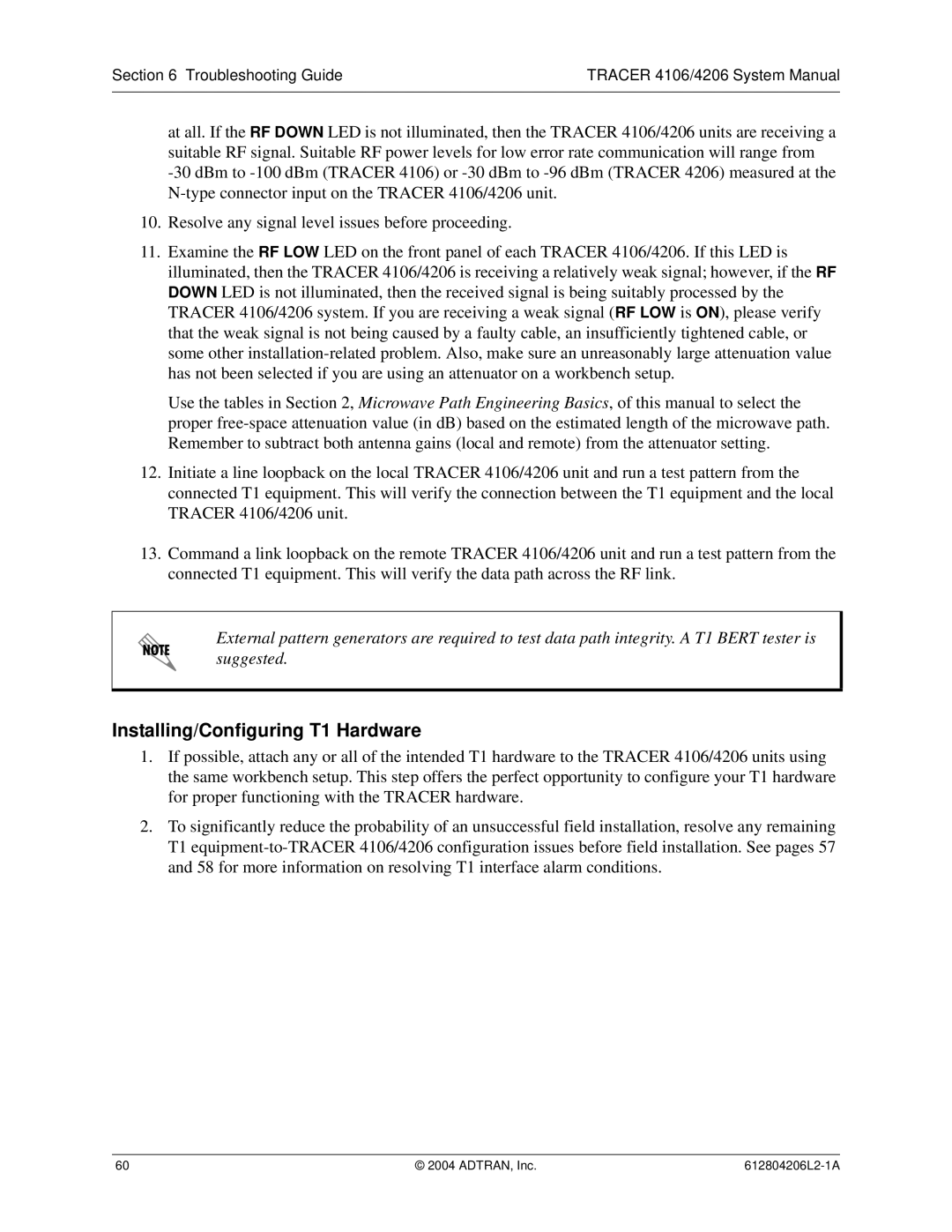
Section 6 Troubleshooting Guide | TRACER 4106/4206 System Manual |
|
|
at all. If the RF DOWN LED is not illuminated, then the TRACER 4106/4206 units are receiving a suitable RF signal. Suitable RF power levels for low error rate communication will range from
10.Resolve any signal level issues before proceeding.
11.Examine the RF LOW LED on the front panel of each TRACER 4106/4206. If this LED is illuminated, then the TRACER 4106/4206 is receiving a relatively weak signal; however, if the RF DOWN LED is not illuminated, then the received signal is being suitably processed by the TRACER 4106/4206 system. If you are receiving a weak signal (RF LOW is ON), please verify that the weak signal is not being caused by a faulty cable, an insufficiently tightened cable, or some other
Use the tables in Section 2, Microwave Path Engineering Basics, of this manual to select the proper
12.Initiate a line loopback on the local TRACER 4106/4206 unit and run a test pattern from the connected T1 equipment. This will verify the connection between the T1 equipment and the local TRACER 4106/4206 unit.
13.Command a link loopback on the remote TRACER 4106/4206 unit and run a test pattern from the connected T1 equipment. This will verify the data path across the RF link.
External pattern generators are required to test data path integrity. A T1 BERT tester is suggested.
Installing/Configuring T1 Hardware
1.If possible, attach any or all of the intended T1 hardware to the TRACER 4106/4206 units using the same workbench setup. This step offers the perfect opportunity to configure your T1 hardware for proper functioning with the TRACER hardware.
2.To significantly reduce the probability of an unsuccessful field installation, resolve any remaining T1
60 | © 2004 ADTRAN, Inc. |
